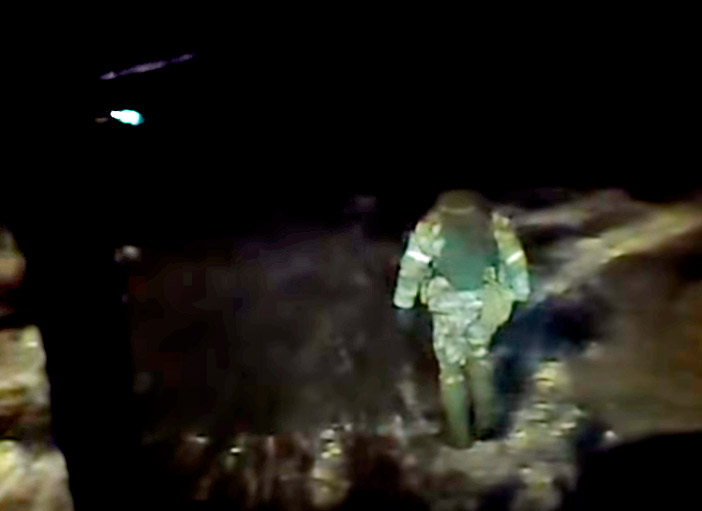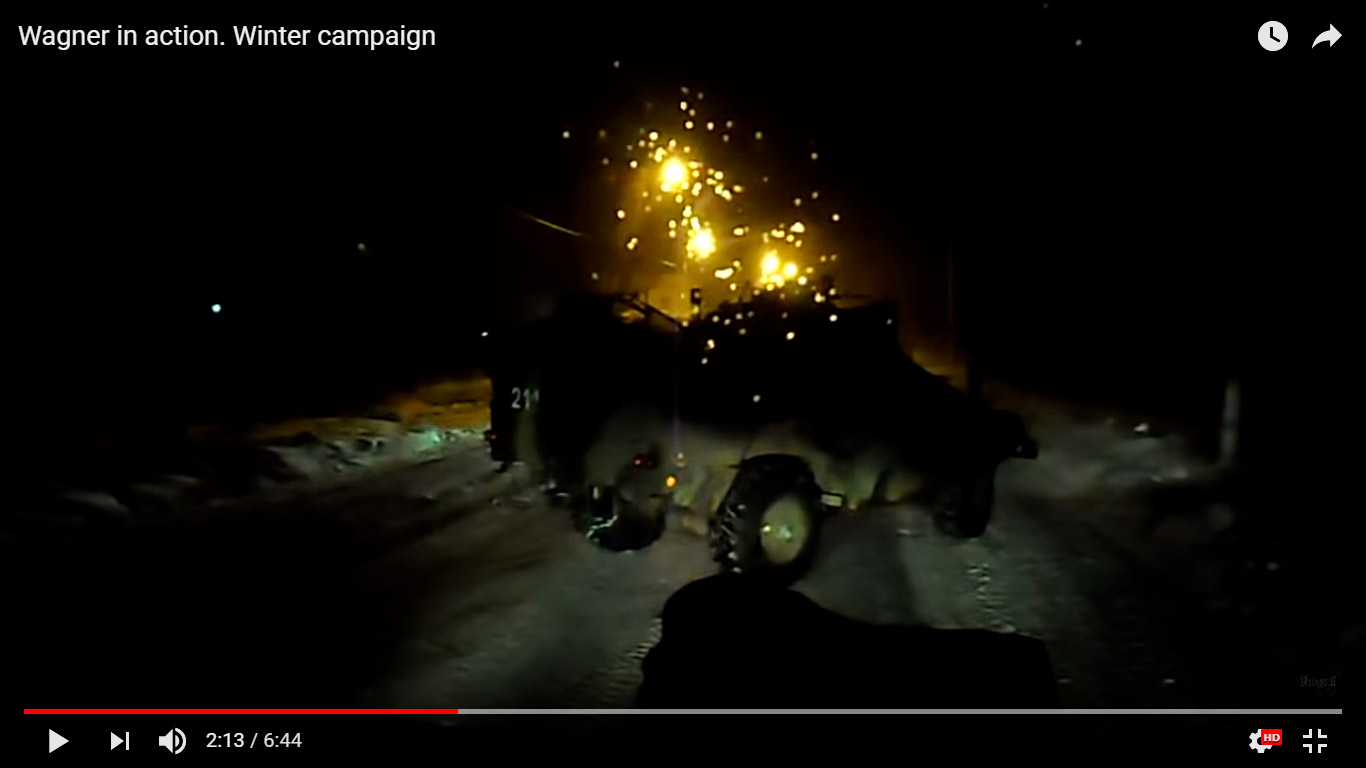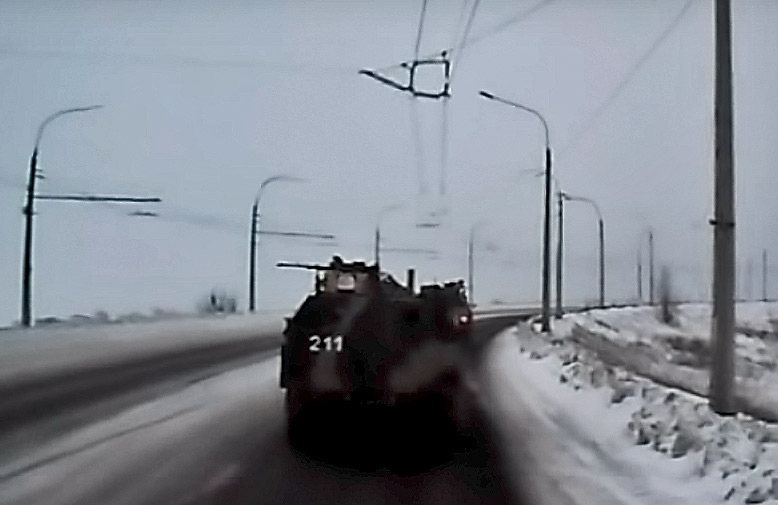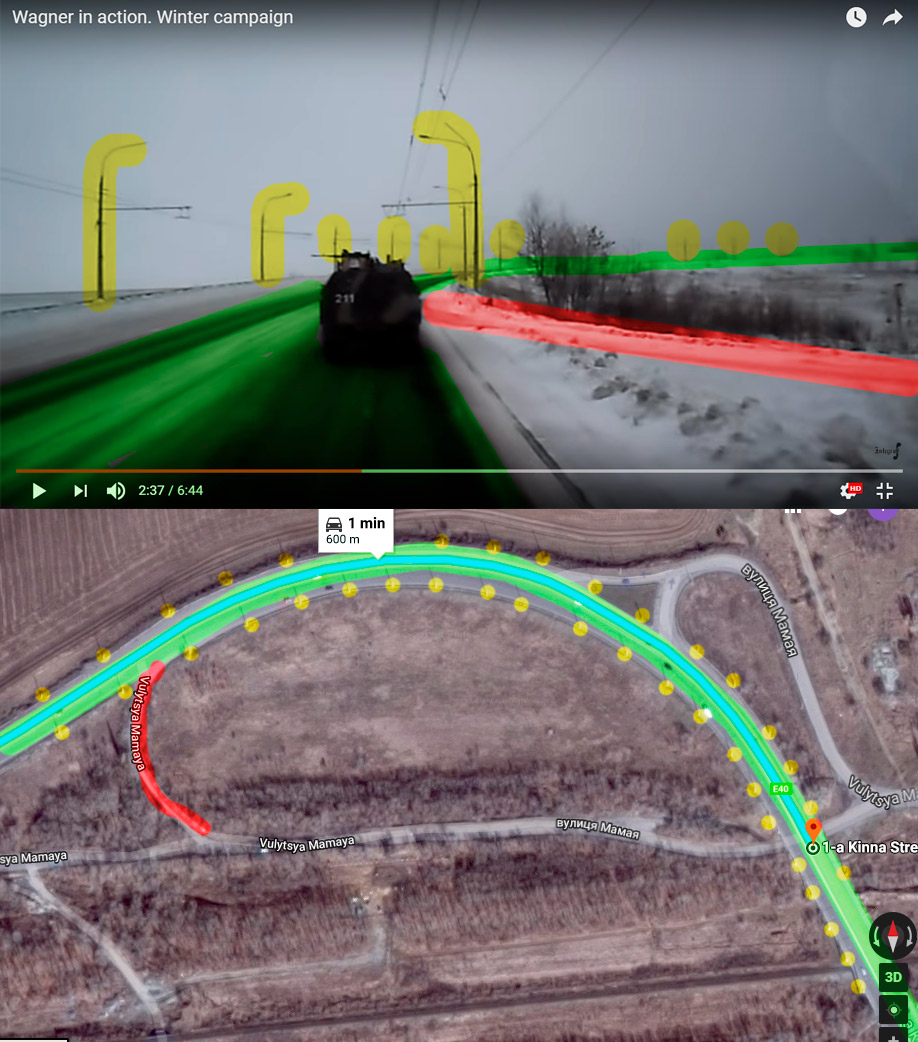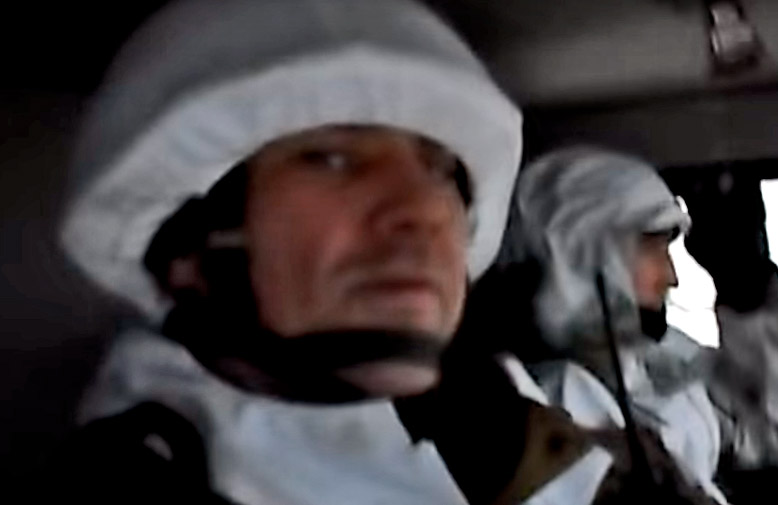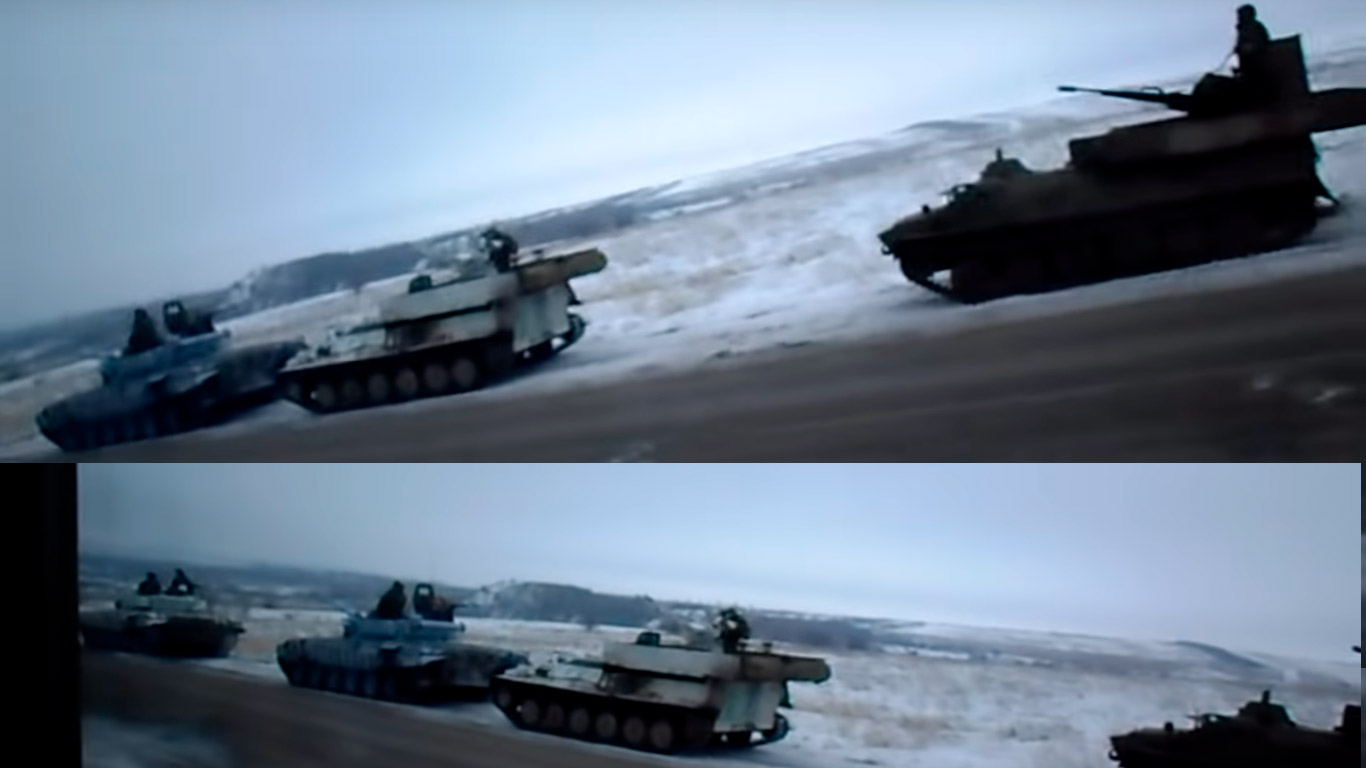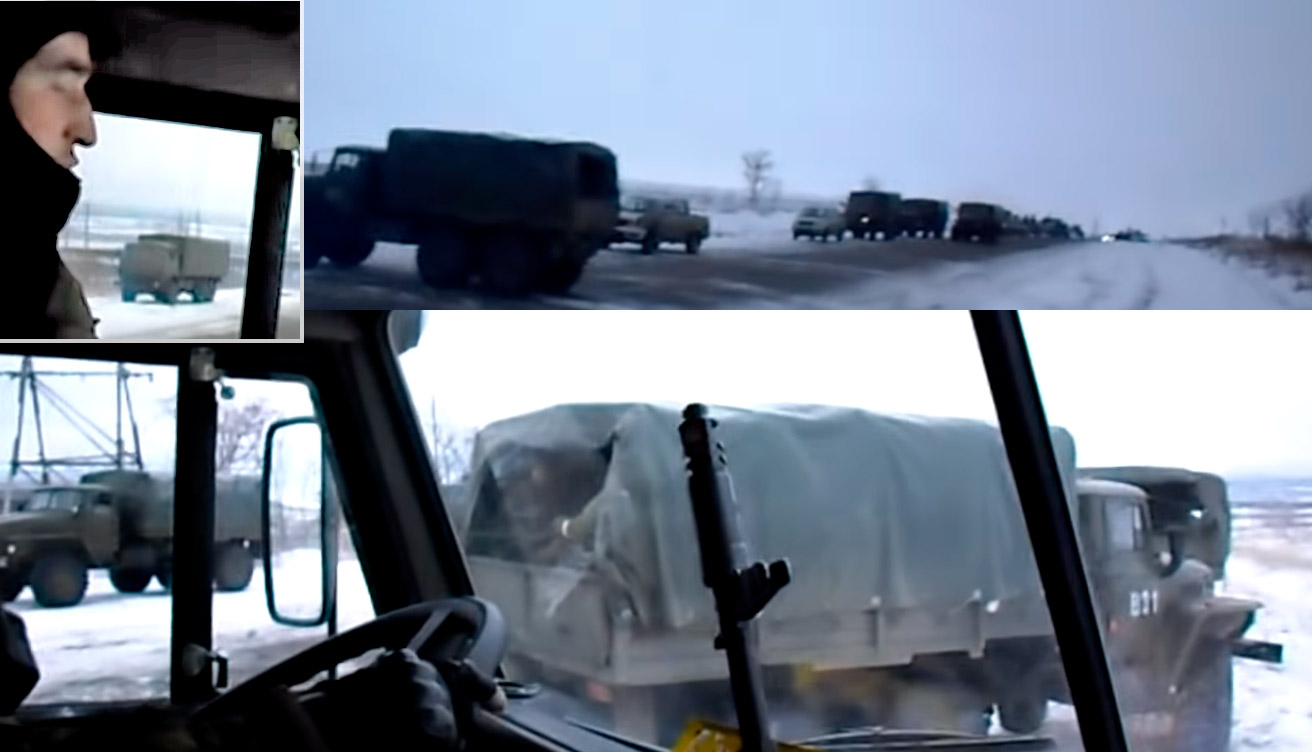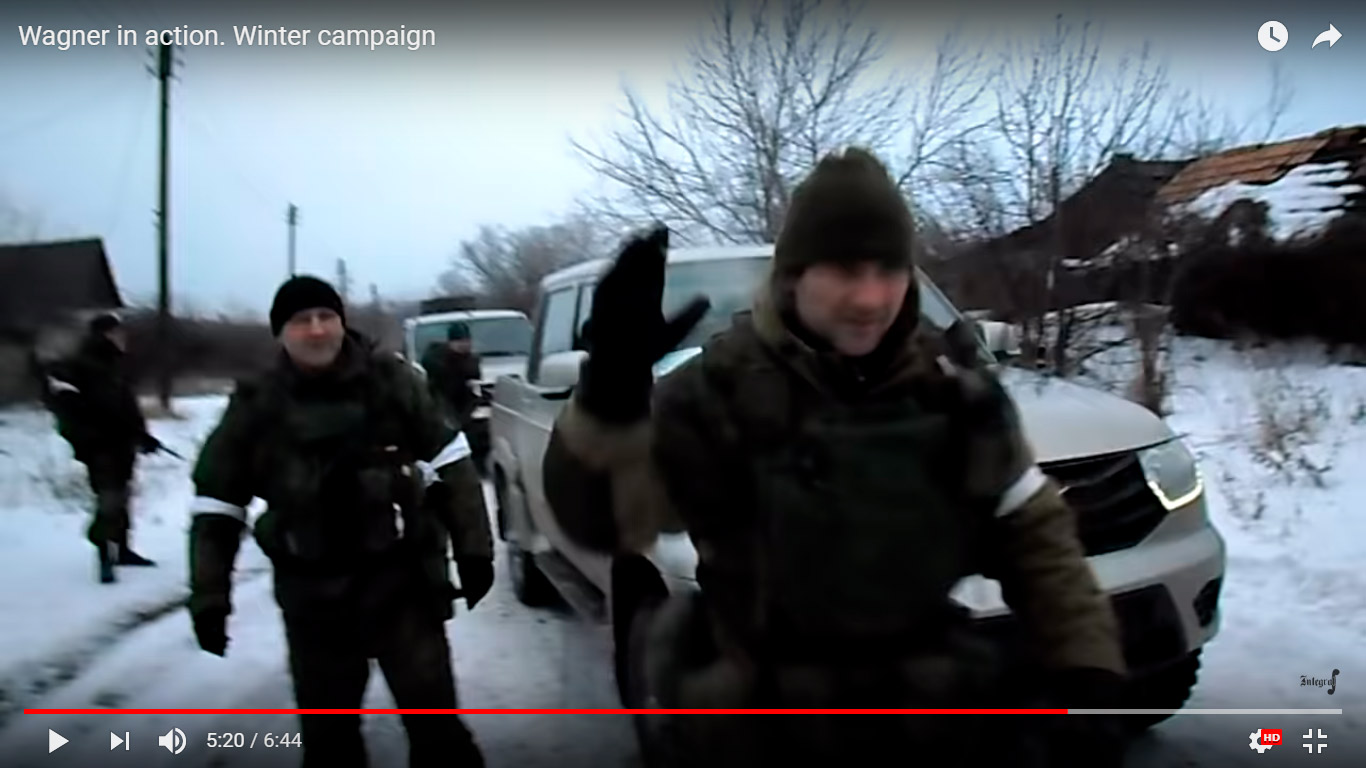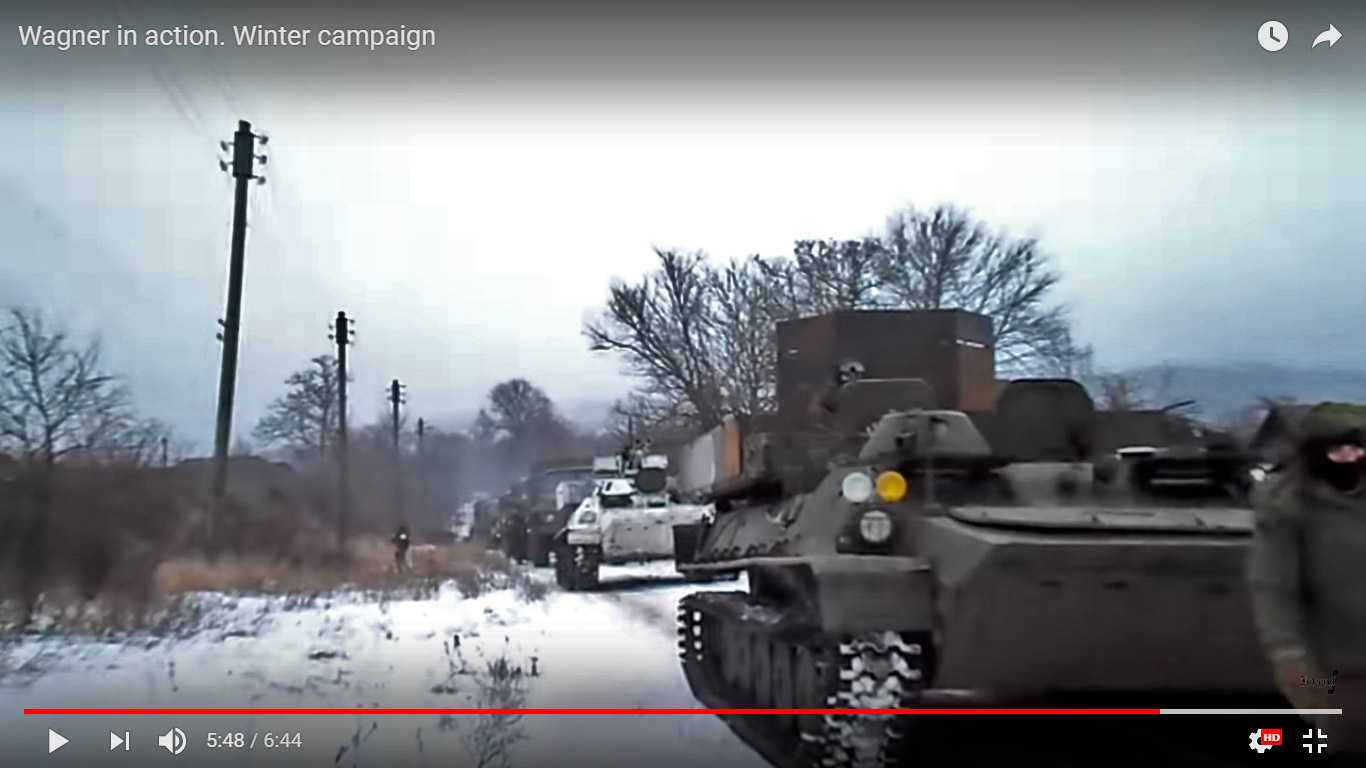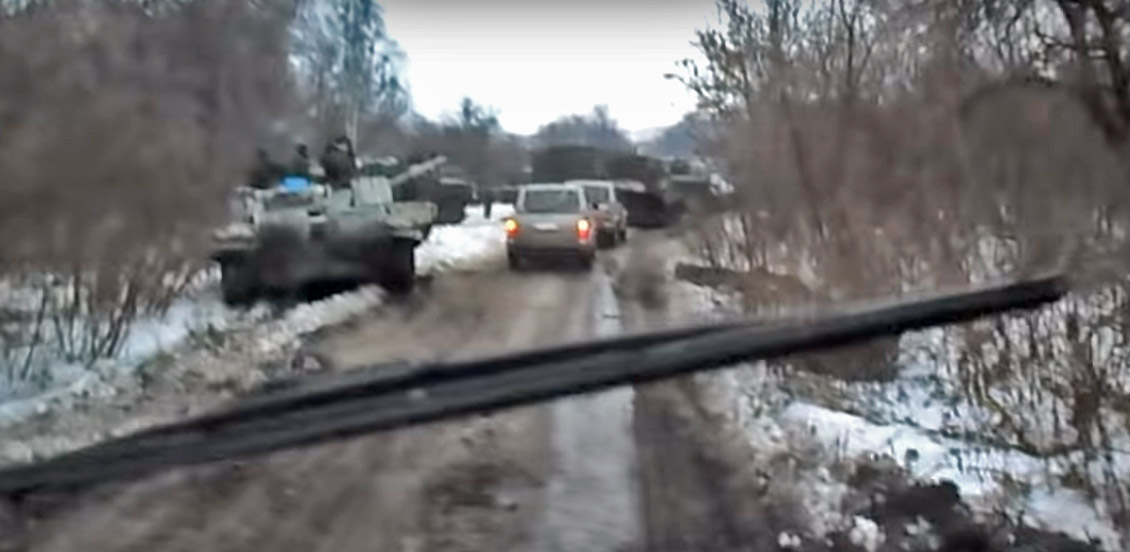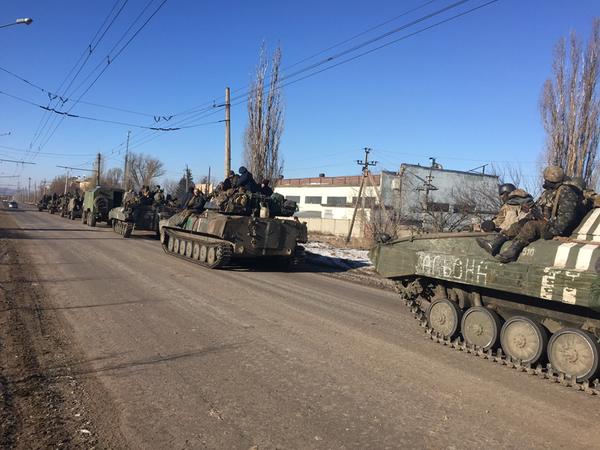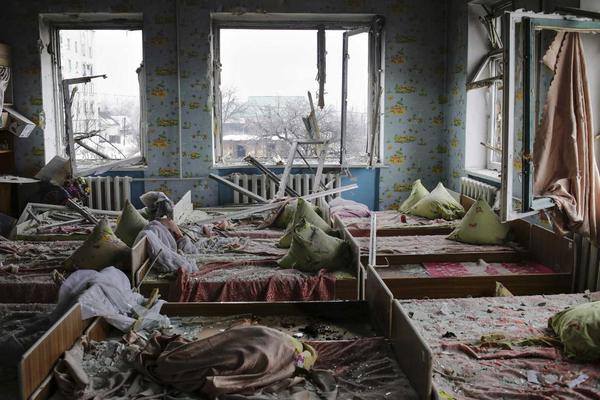PMC Wagner is a Russian private military company that has been recruiting and sending its soldiers, who are mostly the Russian nationals, to fight for the Russian political interests abroad. The "Wagner" mercenaries participated in the Battles in the Donbas, fighting against the Ukrainian forces, and in Syria in Assad's side. The group is supplied with equipment by the Russian army and Wagner often functions as an auxiliary of the Russian military. That is why the group is believed to be a unit of the Russian Defense Ministry in disguise. Wagner's contractors participating in the conflict mean the Russian involvement in it.
Read also: Wagner mercenaries: what we know about Putin’s private army in Donbas
Here is the almost 7-minute cut, consisting of 10 short clips combined, which shows seven different locations:
PanzerQQ has given a bit more details to Euromaidan Press. According to him, the owner of a "trophy" 8 Gb flash stick has copied video files to panzerQQ's drive. There were several video and image files on the stick. No original dates of file creation and modification remained intact. Being asked about the identity of the original author of the clips, PanzerQQ said that the author's name was unknown and he had probably been "killed or at least wounded" in a battle.
The Battle of Debaltseve unfolded amid the Minsk talks, which resulted in signing the so-called Minsk-2 package of agreements to stop the fighting. The Russian-hybrid forces kept redoubling their efforts and threw more reserves into the battle, including the mercenaries of the Russian PMC "Wagner." The Minsk agreements recognized Ukrainian control the city of Debaltseve. But the peace deal didn't stop the assault of the Russian-hybrid forces on the Ukrainian-held Debaltseve salient and hostilities escalated until the Ukrainian troops were forced to leave the area.
Let's examine the contents of each clip and geolocate when possible.
Clip #1. Night scene. Timing: 0m0s-2m10s
The first clip was filmed from a truck's cabin. The truck sits at a narrow city street (two crosswalk road signs from both side of the street), facing a major road (a yield sign). Tall pyramidal poplars sit along the edge the main road - a clear view of the crone of a typical shape and smooth bark on one of them. Here is a part of a dialogue in the Russian language we can hear over the radio:
– ...за заправкой остановку делаем, начинаем выводить колонну общую, как понял меня?
(Translation: ...we stop over behind the gas station, let's start to get the convoy out [to march off], do you copy?)– Повторите [...] (Translation: Repeat it [...])
– Я говорю перед заправкой "Параллель" делаешь остановку, блин, начинаем строить колонну: первую броню и всего подразделения.
Translation: I say, before the gas station "Parallel" you stop, damn, and we start building the convoy: at first the armor [i.e. armored equipment] and the entire detachment."
"Parallel" is a chain of gas stations in Luhansk, Donetsk, Dnipropetrovsk, and Zaporizhzhia oblasts. We didn't find gas stations called "Parallel" in Russian Rostov or other adjacent regions. The map shows "Parallel" gas stations in the occupied part of Luhansk oblast:
Updated: Gas stations of the "Parallel" chain in the occupied part of Luhansk Oblast, data: parallel.ua via web.archive.org. The original image map based on incomplete Google Maps and Wikimapia data can be found here.
Update: Geolocated Parallel gas station from the video:
Location of the first night clip: https://t.co/PMoJ0VWuis
(@nvr_cry_wolf has noticed an arrow on video, @xy_krasnodon has remembered this "Parallel" station unlisted on their official site back in 2014) pic.twitter.com/72okYvh8Ij— English Luhansk (@loogunda) June 23, 2018
Later in the video we can see a tank (main battle tank, MBT) passing by, then one more tracked vehicle (a BMP or an MT-LB), then the next MBT stops and we can see headlights of at least 4 more vehicles in the convoy, the truck driver or the 3rd person in the cabin who's addressed by the cameraman as Lyosha (diminutive from the Russian name Aleksey) comments, "...Броня наша" ("It's our armor").
Among other talks there is a dialog between "Lyosha" and the cameraman:
– ...Шеврон "Кошу укроп"... ("Chevron 'I'm moving the dill down'..." - Укроп "dill" was a Russian term to designate the Ukrainians, as they thought a derogatory one)– Надел? ("Have you it on?")
– Жалко, подарок. ("It's a pity [to wear it because] it's a present")
Such chevron was popular among "local Donbas militiamen" under Russian command, so Aleksey could receive one either in the occupied Ukrainian territory or in a training camp in Russia:
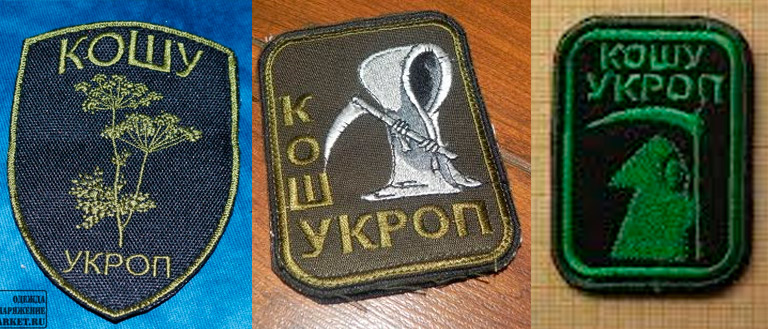
We have found no reliable geolocation for the first clip so far, however, the main street in it looks like a typical arterial street in the city of Luhansk [the author of the article was a Luhansk resident until 2014]. such variety of pyramidal poplars having smooth bark as featured in the clip was not so popular in other cities of the province for the beautification of the avenues. The "Parallel" gas stations absent in adjacent Russian regions exclude the cities in Rostov Oblast from the list of possible locations. However, the same poplars can also be found not in Luhansk alone but in other regional cities like Sorokyne.
Read also: Identical statues to Russia’s “Wagner” mercenaries erected in Syria, occupied Luhansk
Clip #2. Night scene, somewhere on a road. Timing: 2m11s-2m27s
The short piece features a BPM-97 Vystrel #211 having blocked up the snowy road, city lights and lamp posts can be seen. the video shows up a truck's driver and the second passenger (one of them is "Lyosha"):
The location is unclear, this can be any lighted street in the private housing area of any city or settlement.
Clip #3. Highway with trolleybus overhead wires. Timing: 2m28s-3m19s
The clip features the BPM-97 Vystrel #221 moving in front of the truck of the cameraman, as geolocated by Euromaidan Press, from Molodohvardiysk towards Sorokyne approaching an overpass over the railway to enter the city from the north. Another Vystrel goes first in the convoy. The trolleybus overhead wires are distinct over both lanes of the highway. The place is pretty easy to be geolocated because Sorokyne trolleybus route #1 was the only intercity trolleybus in Luhansk Oblast.
Clip #4. At the entrance to Sorokyne. Timing: 3m20s-4m00s
The short clip shows a covered military without license plates with a few armed men in military gear in its body. The truck stops facing the "Krasnodon" city sign at the south entrance to the city of Sorokyne (Krasnodon was its name before 2016).
One more piece of the puzzle: here is the location of the "Krasnodon" city sign at the entrance to #Sorokyne from the direction of #Dovzhansk https://t.co/S03mEaft9E thnx @xy_krasnodon #pmcwagner pic.twitter.com/cGy4WUEJW5
— English Luhansk (@loogunda) June 19, 2018
https://platform.twitter.com/widgets.js
Clip #5. A military convoy with tanks. Timing: 4m01s-4m43s
In this clip, the truck carrying the camera operator makes a U-turn at a highway, uncovering a massive convoy of military equipment. Footage shows 2 MT-LB armored tracked vehicles equipped with anti-aircraft guns, 2 main battle tanks, 5 Ural trucks, and at least 4 pieces of unidentified armored equipment. The anonymous cybersleuth who identifies himself as Askai707 known for his open-source researches into the war in the Donbas published on Bellingcat, has geolocated the site as a stretch of T-1322 highway, connecting Sorokyne in the south with the city of Dovzhansk. The site is situated 1.4 km away from Sorokyne.
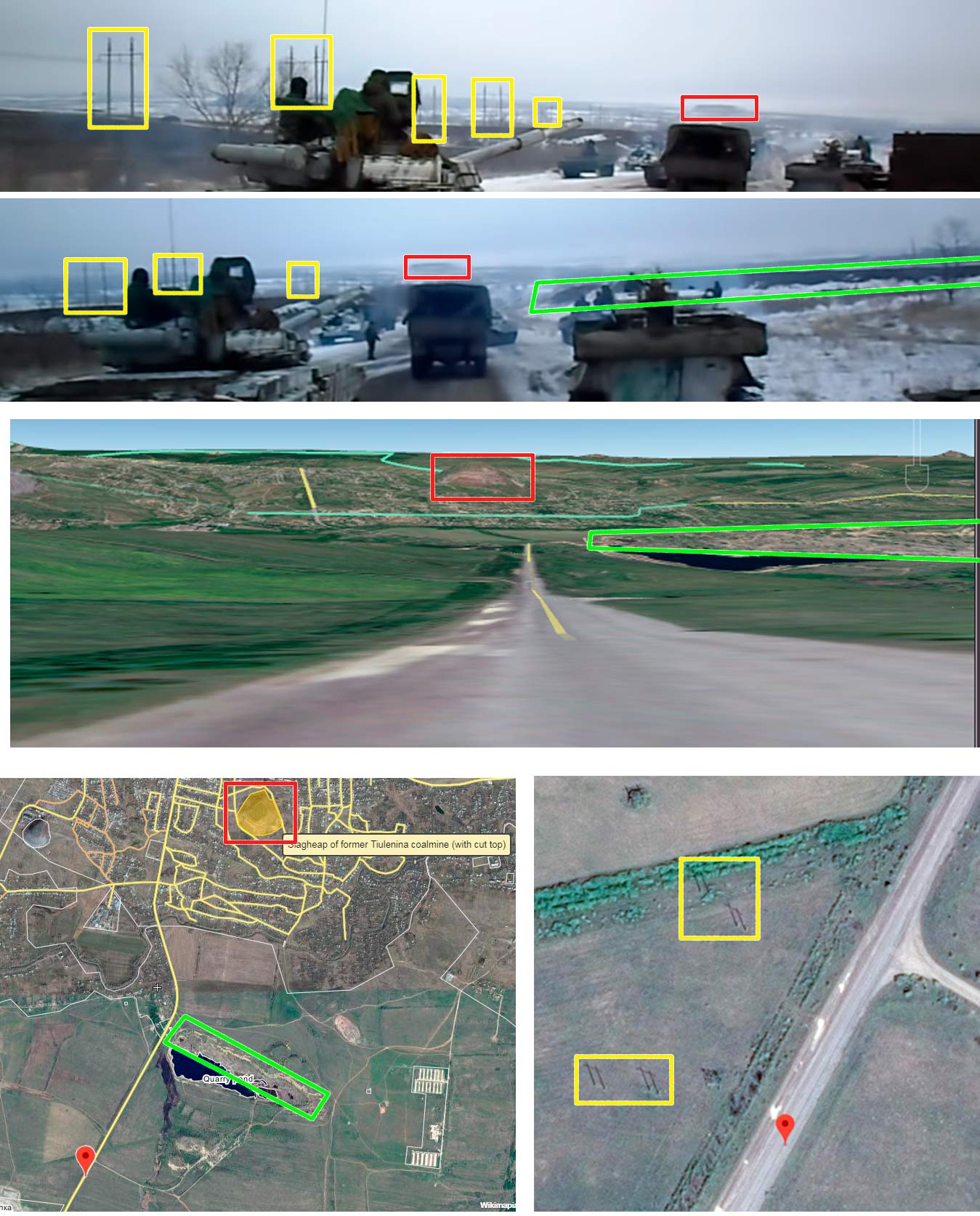
Clip #6. More of the same convoy. Timing: 4m44s-5m09s
The clip #6 continues showing the same convoy at the same location, featuring more equipment.

In total, clips #5 and #6 reveal:
- 6 Ural trucks;
- 5 main battle tanks (at least 2 of them were T-72);
- 2 MT-LB vehicles;
- 2 white UAZ pickup trucks;
- 1 KamAZ truck;
- 1 BMP-1 IFV;
- at least 4 more pieces of unidentified armored equipment.
Read also: Russian participation in the war in Donbas: evidence from 2017
Clip #7. Village. Timing 5m10s-5m49s
The camera operator steps out of a cabin of the Ural military truck, walks down a village street passing by the two white UAZ pickup trucks which were featured earlier in the clip #5, and shows the equipment sitting in the convoy behind the UAZ's with armed men, standing near the vehicles - 2 MT-LBs with AA-guns, 4 Ural trucks. One of the men in uniform says, "Наконец приехали" ("Finally we've come").
Clip #8. Village road view in opposite direction. Timing: 5m50s-5m51s
The one-second piece shows several pieces of equipment, including a tank, and a Ural truck, as well as 2 UAZ pickup trucks among the military hardware:
Clip #9. Battle. Timing: 5m52s-6m19s
This piece features a group of men in winter camouflage cloak armed with sniper rifles on the edge of woods facing a plain covered with snow, several pieces of BPM-97 Vystral vehicles in the background, a Kamaz truck also emerges. One man in military goggles shouts, "Дистанцию, дистанцию растянули по двойкам, в группы не сбиваться" ("Distance, distance - stretch it by pairs, don't flock in groups"), the word "растянули" is pronounced with a stereotyped Moscow accent. When the cameraman falls down after a burst of an allegedly heavy machine gun, we can see that he's also got a sniper rifle.

Clip #10. Battle. Timing: 6m20s-6m44s
The commander says that it's the 4th day of their expedition, and a mortar fire is conducted at them (a sound of an explosion heard over the radio).

Twitter user @nvr_cry_wolf has suggested the geolocation of the battle site, it's the edge of woods about one kilometer north of Sanzharivka:
Here is how it matches the terrain, power pylons, shape of the greenery:
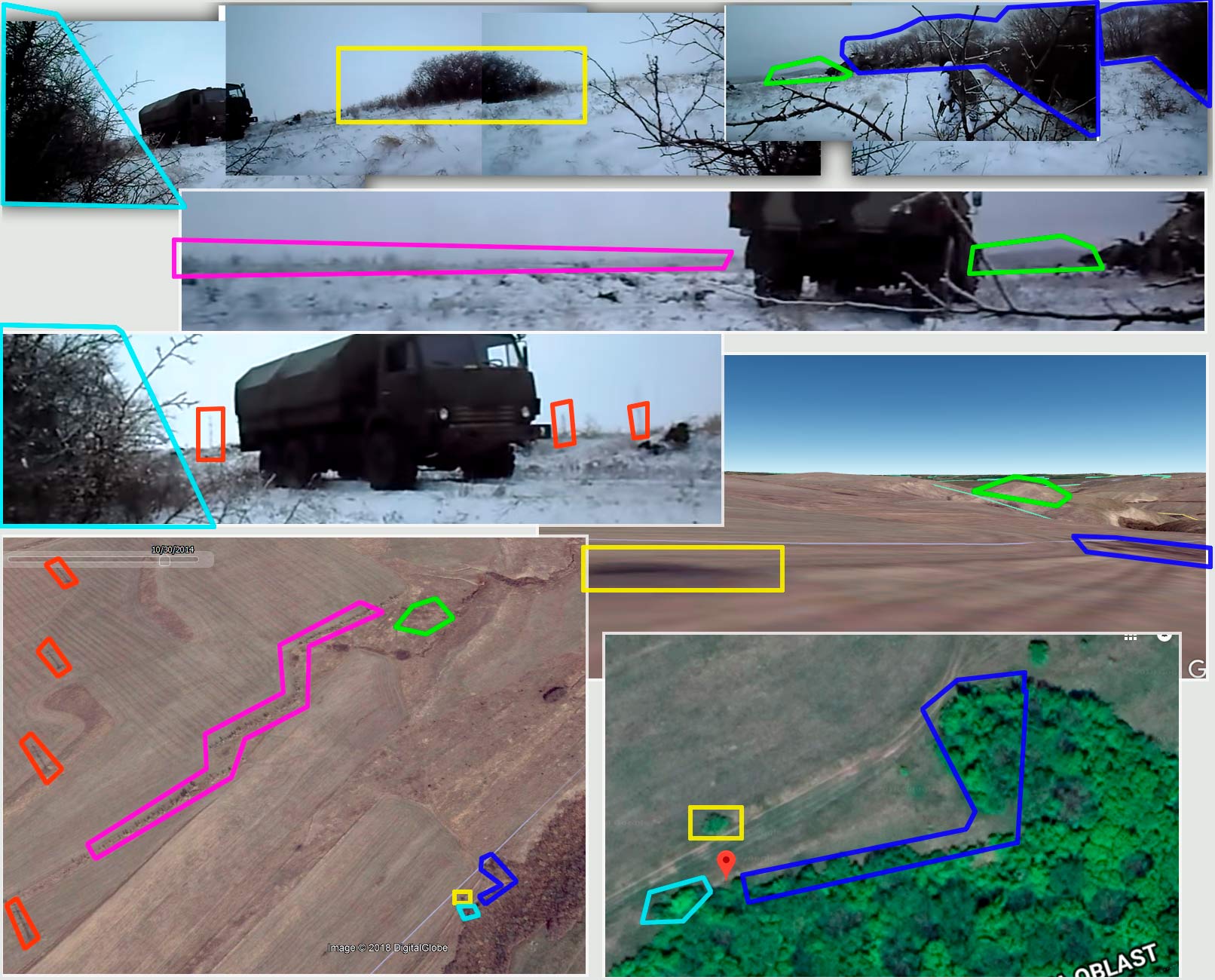
PMC Wagner in Luhansk Oblast
The mercenaries of PMC Wagner were first spotted in Luhansk Oblast in July 2014, however, they didn't have sophisticated Russian equipment then.
Wagner mercenaries didn't operate the BPM-97 Vystrel vehicles exclusively, several pieces were reportedly handed to local "agencies". However, Vystrels in the Donbas almost always pointed to PMC Wagner, because its mercenaries had more than one or two of Vystrel and actively used them.
The first public appearance of the brand-new Russian-made BMP-97's appeared in a segment of Russian propaganda Internet TV channel "New Front" aired on 30 December 2014. The video featured drills near Luhansk, in which tanks, IFVs and other armored vehicles trained an assault on a high ground of the imaginary enemy. On the next day, Vesti news show broadcasted the segment on Federal Russian channel "Rossiya-1".

The photographs of Vystrels sitting on the premises of transport company "Transpele" in Luhansk surfaced referring to the date December 2014:

Two videos show the BPM-97 Vystrel on the street of Sorokyne (then Krasnodon) on 10 January 2015 (video #1, #2).
Russian BPM-97
The BPM-97 Vystrel was spotted several times in the Donbas, mostly in Luhansk Oblast. The "BPM" stands for "battle vehicle for border guards," it is the military designation for the Russian Kamaz 43269. The Vystrels' production started in Russia in 1999. The vehicle is in service in the Russian Armed Forces. Russia exported several pieces to Kazakhstan and Azerbaijan and has never officially shipped the BPM-97 in Ukraine.
Since 2014, the armored vehicle has been fixed several times in the occupied part of Luhansk Oblast and later in the Donetsk one too. The blog "Donbas - Ukraine" documented the occurrences of Vystrels in eastern Ukraine.
A pro-Russian online resource, the open database of destroyed military equipment "LostArmour" has confirmed four cases of BPM-97 having been destroyed in the Donbas in January-February 2015. All instances reportedly occurred in the south of Luhansk Oblast or in adjacent northern areas of Donetsk Oblast.


, without marking. This one was earlier spotted in occupied Luhansk on 1 January 2015 - earlier on the same day one of "LNR" chieftains, Alуksandr Bednov, was assassinated near Lutuhyne not far from Luhansk. Bednov opposed then Moscow-installed "LNR head" Igor Plotnitsky, and the mercenaries of PMC Wagner had reportedly liquidated him.
A phone conversation intercepted by the Security Service of Ukraine (SBU) on 21 February 2015 confirms that the two destroyed BPM-97 vehicles belonged to PMC Wagner. In the record, reportedly Dmitry Utkin, head of PMC Wagner, gives a command to his subordinate in the Donbas, Sergey Kovalyov to urgently backload two "Dozors" downed by the ATO forces near Debaltseve. Dozor is an army modification of the BPM-97. Utkin asks whether 3 "Dozors" were lost, Kovalyov describes Wagner's losses in equipment mentions "Two Dozors, a Ural, tanks, BMPs."
Meanwhile, as of the conversation, there was another lost BPM-97, destroyed in Luhansk Oblast on 18 February 2015 (#233, in Verhulivka). The fourth Vystrel was downed on 25 February 2015 (#01-4, location unknown).

Sanzharivka
The village of Sanzharivka, Russian-controlled as of January 2015, was near the north-north-western part of the Ukrainian-held Debaltseve salient. The active battles in the area kicked off in mid-January and lasted until 18 February when Ukrainian forces were forced to withdraw from the entire salient back to the west
The most intense battle for the key point of the defense area, the unnamed high ground 307.9m southwest of the village of then Russian-controlled Sanzharivka took place on 25 January 2015. The hill is situated just about 2.5 kilometers away from the location shown in the clips #9 and 10.

Fire attacks on the Ukrainian stronghold on the hill started on 19 January and the occurred every day, the first tank attack occurred on 23 January, later the assault culminated on 25 January. The Ukrainian soldiers sustained losses caused by a Russian tank which approached the stronghold from the side hiding in the fog, but managed to repel the attack, destroying several tanks.
No attempts to storm the high ground followed in the later days, nothing but remote artillery attacks on the stronghold until 18 February, when Ukrainian soldiers left the position under the risk to be encircled.
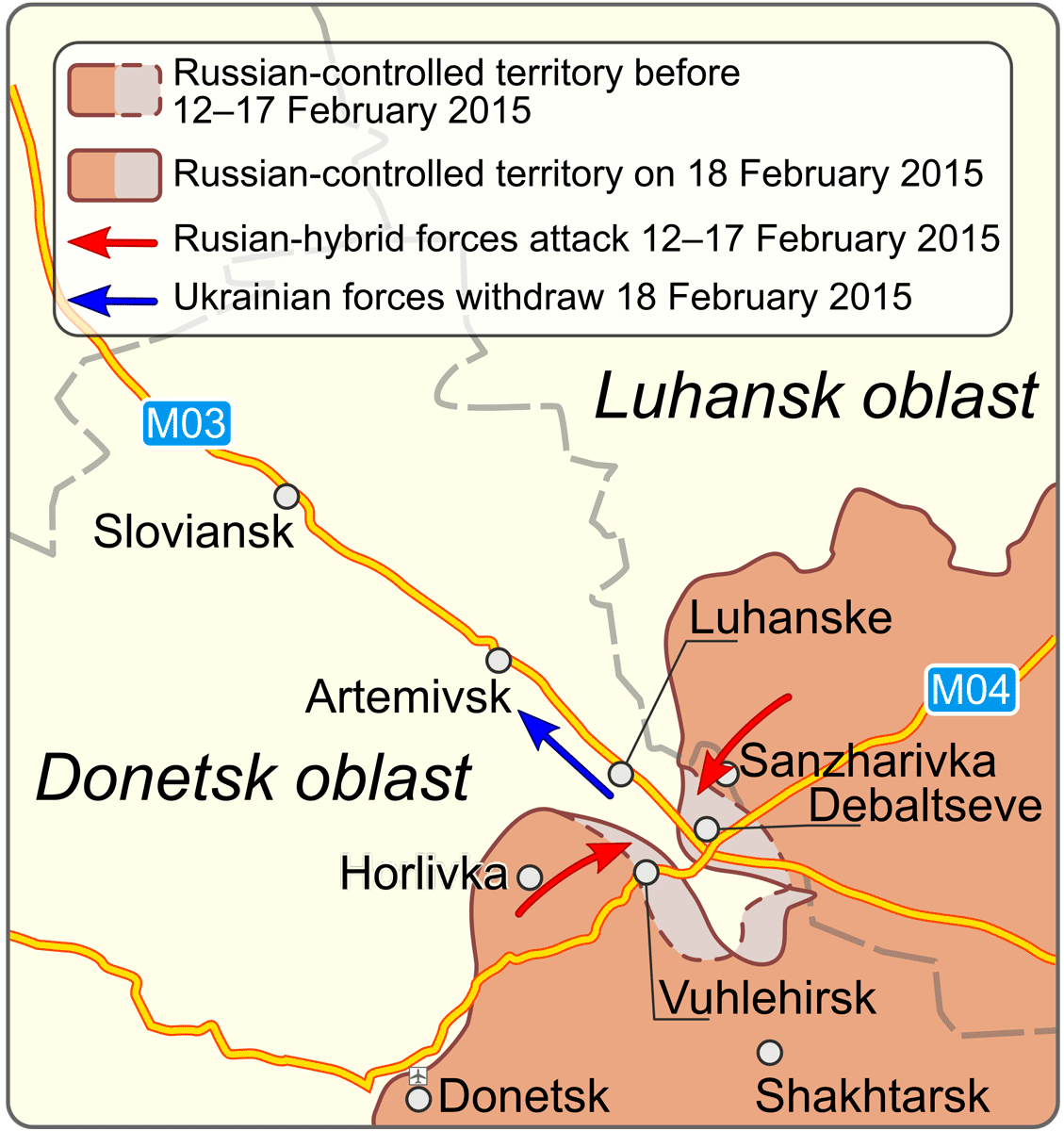
So what about the footage under examination?
The video was definitely recorded in the occupied part of the Donbas, at least most of its clips. We can assume that the video actually shows the Wagner mercenaries - in two last clips, they appear not far from the sites where their BPM-97 vehicles were destroyed. Moreover, the very fact that the armed group had at least 5 such vehicles corroborates the assumption - no other Russian-hybrid detachment had so many at that time.
Two faces in the video resemble the Wagner mercenaries listed in the Myrotvorets database, however, we haven't identified any of the persons featured in the footage for certain.
The cut of the video made by PanzerQQ seems to be wrong:
- The convoy moves out at night.
- Then they stop facing the south entrance to Sorokyne.
- Then they build up a column on the same highway but 1.5 km away further south from Sorokyne and start off towards the city.
- Then they enter the same Sorokyne from the north.
- Later in a village, they mention that they've reached the destination.
- And finally, we see the battle a hundred kilometers west of Sorokyne.
One might assume that first, they formed a column (clips 5-6), then they moved to Sorokyne (clip 4) from the south to reach Luhansk for combat shakedown. If so, then this happened in December 2014. Then they might have started off from Luhansk (clips 1-2) towards Sorokyne (clip 3). A few BPM-97 vehicles were spotted in Sorokyne (not in a convoy) on 10 January 2015. Finally, they end up in a battle north of Sanzharivka allegedly on 28 January 2015 or days earlier. The final-destination village can be either a site in the area of the front-line village of Sanzharivka or a location near Luhansk where they had arrived for combat shakedown in December.
Anyway, the movement of the convoy in the video remains unclear without geolocating the first ("Night Scene") and the seventh ("Village") clips and without additional materials.
The video confirms that in the final stage of the Debaltseve battle in January 2015, Russia deployed the Wagner mercenaries near Sanzharivka to break through the northern part of the "bottleneck" of the pothole Russia attempted to make out of the Debaltseve salient. The Wagner mercenaries failed their decisive mission.
The Ukrainians in the north withstood the "Wagnerite" attacks back then, but other detachments of the Russian-hybrid forces had managed to advance in the south of the salient's "bottleneck" and, risking to be encircled, Ukrainian forces had to leave Debaltseve and the settlements in the area.
Read more on PMC "Wagner":
- From Donbas to Syria: investigation reveals Ukrainians fighting in Russian PMC Wagner
- Identical statues to Russia’s “Wagner” mercenaries erected in Syria, occupied Donbas
- Wagner mercenaries: what we know about Putin’s private army in Donbas
- Three largest Russian militant training facilities identified
- Putin may soon make ‘veterans of hybrid wars’ new symbol of Russia’s future
- Russia’s “ghost” armies and the “heroes of the Russian spring” in Ukraine
- Putin’s Cook and other indictments
- Ukraine names over 150 mercenaries from “Putin’s private army” fighting in Ukraine and Syria
- Russia recruited over 5,000 mercenaries to fight in its wars abroad, SBU says
- Putin comes up with another way to hide Russian combat losses
- Moscow’s private military companies continue to be a serious threat in Ukraine
Read more on the Battle of Debaltseve and its consequences:
- Debaltseve Diaries – Debaltseve under first attacks
- Ukraine releases names of Russian soldiers killed in Debaltseve
- Debaltseve evacuated — 600 choose Ukraine, 30 Russia
- Official Ukrainian losses in Debaltseve after ceasefire: 6 KIA, 100 WIA
- Debaltseve: volunteer shoots film about his comrades-in-arms (video)
- Life goes on for Ukrainian soldier survivor of Debaltseve battle
- Debaltseve: hunger and hopelessness
- Six Lessons from the Debaltseve defeat
- Everything you wanted to know about the Minsk peace deal, but were afraid to ask



